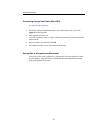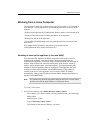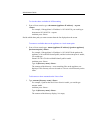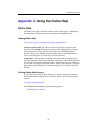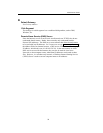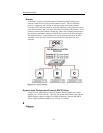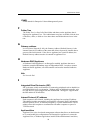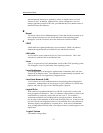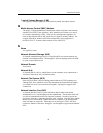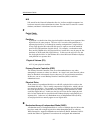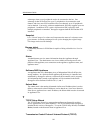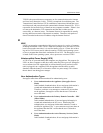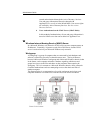
Administrator Guide
97
and automatically detects new Appliances as they are added to the Local Area
Network (LAN). In addition, ApplianceView can be configured to view and
manage Appliances outside of the LAN, provided that they have domain names or
Internet Protocol (IP) addresses.
K
Kernel
The kernel is the low level fundamental part of Linux that resides in memory at all
times, and provides basic services for all other parts of the operating system.
Storageflex uses the 2.4 kernel, one of the most recent versions available.
L
LDAP
LDAP stands for Lightweight Directory Access Protocol. LDAP is an industry
standard for organizing data of all kinds for easy and flexible retrieval.
LAN cable
A LAN cable is used to connect devices in a Local Area Network. This is also
referred to as a Patch Cable or an Ethernet Cable.
Linux
Linux is an open source, freely distributable version of the UNIX operating system.
The Storageflex server is based on the Linux operating system.
Local Appliances
A Local Appliance is an Storageflex Appliance that is attached to the Local Area
Network by an Ethernet cable. Local appliances are automatically recognized, and
added to the list of Local Appliances by ApplianceView.
Local Area Network (LAN)
A LAN consists of several computers that are networked together using physical
connections. Although there are several types of LAN, Ethernet is by far the most
popular, and is the only type of LAN that Storageflex supports.
Logical Drive
In the context of a partitioned disk drive or a RAID, a logical drive refers to the
users perception of a disk drive. This is in contrast to a physical drive, which is the
actual disk drive, irrespective of how the user may view it. For example, a
workstation could have one 80 GB hard drive (one physical drive), but the drive
may be setup in four partitions of 20GB each (four logical drives). In this case, the
user will view the one single physical drive as four distinct drives since Microsoft
Windows displays each partition as a separate drive. In the case of a Redundant
Array of Independent Disks (RAID), several physical drives actually appear as one
logical drive.
Logical Volume
A mountable storage object.



